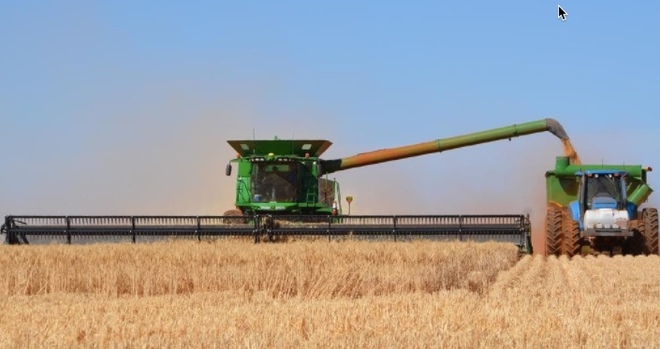Harvest begins in Northern NSW
- By: "Farm Tender" News
- Cattle News
- Sep 30, 2020
- 638 views
- Share

By Angus Groves - AWB
Harvest has officially kicked off in Northern New South Wales, with the earliest barley crops north of Walgett and Moree coming off this week. This marks the beginning of what will be a remarkable turnaround for New South Wales grain producers after suffering through 3 years of below average production.
New South Wales wheat production alone is expected to exceed 9 million tonnes this season, a whopping four times as much as the drought affected production years of 2018 and 2019. And with a finish to the weather that remains very kind to the central and southern regions of the state, we expect this production estimate could grow if the rain turns off as we progress further into harvest.
The only risk to this mammoth production estimate is of course the pending La Nina that generally delivers above average rainfall to eastern Australia. If we were to receive increased rainfall through the months of October to December, it would risk destroying the quality of ripened grains that farmers have waited some years to harvest a crop of this magnitude.
In terms of local pricing, we have seen them increase and stabilise in recent weeks. In part due to the dryness in the west of the country, with the states of Western Australia and South Australia largely missing the beneficial rains we have seen throughout New South Wales and Victoria. Weather conditions in Western Australia remain particularly concerning as temperatures remain above average, and with no significant rain on the forecast to finish the crop, our friends in the West remain desperate for a finishing rain in what could be a below-average crop for that region.
Local prices at the major ports of Newcastle and Port Kembla in New South Wales remain close to the $300/t level in the last fortnight for APW1 wheat. It is expected that many farmers will have to sell a percentage of their crop as soon as it is harvested after years of drought. This will lead to some downward price pressure at harvest, however there may be some small shorts as the export channel is brimming with vessels destined to leave the Newcastle ports throughout November and December this year. If there isn’t enough grain that can be moved to the port-level and fill these boats as they are destined to depart, it will create a situation where buyers need to pay increased values to get this grain delivered, and to fill the ship.
Globally, pricing continues to remain strong with dryness in the Northern Hemisphere. This is particularly relevant in Russia, who remain the biggest exporters of wheat around the world. They are currently in the planting phase across the Black Sea, and the lack of soil moisture in countries such as Russia, Ukraine, and even Romania is triggering a reluctance of the grower to sell their current wheat stocks they have harvested from the previous year.
If the dryness continues, expect to see global prices increase as the Russian farmer holds on to their grain production in sight of rain.












Share Ag News Via